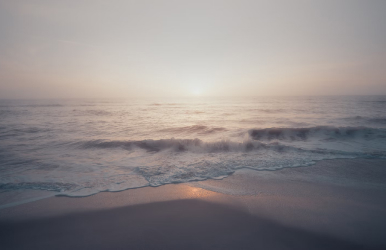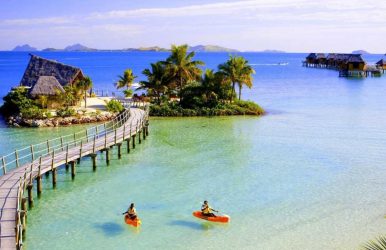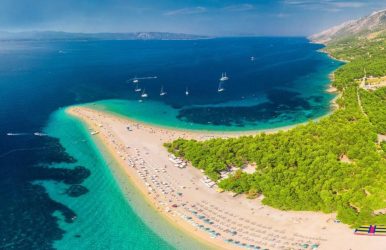You Won’t Believe The Best Things To Do When In Fiji!
BY sagnika Aug 5, 2023
Is your heart craving some natural beauty that will help you relax? Why don't you visit Fiji, situated in the middle of nowhere, not exactly nowhere! You will forget all your worries with the endless South Pacific around you. Want to know what are the things to do in Fiji? A travel destination that is nothing short of heaven, Fiji is home to 333 tropical islands. It is in the middle of the South Pacific, with authentic flavors, enticing culture, and beautiful nature. Read the article to learn more about what to do when in Fiji! There are a variety of activities that travelers can experience with the abundant collection of flora and fauna. There is also the tribal culture for you to experience unique and thrilling events. You Won't Believe When I Say About The Best Things To Do In Fiji! Fiji is more than just a travel destination. Instead, you will experience an authentic culture when you visit Fiji. If you are traveling from the US, you do not need a visa; your stay can be as long as four months. You can book tickets on the 10 hours long direct flight from Los Angeles to Fiji. The destination in Fiji is Nadi International Airport; hence, if you live closer to Los Angeles, you are in luck. However, if you live elsewhere, you must travel to Los Angeles and then fly. Fiji Airways and Air New Zealand are two airlines that operate in Fiji, and they both offer regular flights daily if you travel from the USA, Europe, or the UK. You could visit Fiji between May and September to experience clear blue skies. You can go between October to April if you want to experience the rain. However, you do stand at the risk of experiencing a storm or cyclone. Some of the best resorts in Fiji are Sheraton Resort & Spa, situated on Tokoriki Island, InterContinental Fiji Golf Resort & Spa, Fiji Marriott Resort Momi Bay, and others. 1. Go For A Safari To The Sigatoka River! The Sigatoka River Safari is very entertaining. It takes you around the Sigatoka River Valley, where you can visit villages, eat Fijian delicacies, drink Kava or Yaqona, a sedative and narcotic Figian drink, and dance. The drink is made with the crushed root of Yaqona and further strained with water. The safari also includes coastal Inland Tours, including a river cruise, The Cannibals Cave Tour, or visiting a waterfall. The river safari lasts 4 hours, including the Kava ceremony in the local villages, where people drink from a big communal bowl. A busy market is situated at the banks of the Sigatoka River across 4 km inland! You can visit this hub which gives glimpses of urban life in the provinces of Fiji. The market has small-scale shops creating a strong and bustling network of sellers and curry restaurants. There is also the Sigatoka Sand Dunes National Park to visit if you want something exciting. The dunes are spread across 650 hectares while stretching across 3 km at the mouth of the river. You can have some fantastic views, especially when the dunes rise to 80m in some places. 2. Visit Kula Wild Adventure Park One of the largest collections of native wildlife is boasted by Kula Eco Park, situated in a temperate forest. Tourists can use boardwalks to walk around and explore the wilderness. The collection of water birds, doves, patrons, and reptiles is to look for! There are reptile enclosures, a reef fish aquarium, and aviary cages where the huge crested iguanas are the highlight considering they are only found in limited islands in Fiji such as Yasawa and Vanua Levu. Marine displays such as soft and hard corals, tropical fish, and ocean turtles exist. 3. Stroll Around The Garden Of The Sleeping Giant! The Garden of the Sleeping Giant is 35 acres of rainforest that acts as an adventure park. There are zip wires which are used by travelers, mostly adventure junkies, who can fly across the jungle through these at a speed of 60 km per hour. Also, there are ropes for swinging, pools for swimming, and you can also spot parrots. There are waterfalls to which you can walk around, or you can also get a 1 hour guided walk, a part of the package when you buy the entrance tickets. The adventure park was founded by the actor Raymond Burr, also known as Perry Mason! A collection of flowering plants, orchids, and trees spread across the gentle trails across the landscape. The park is situated just north of Nadi, so you can also take a guided tour to Nadi to experience the culture there. You can also take a dip in the thermal pools, which are pretty restorative! 4. Explore Nadi One of the most authentic places to visit in Fiji is Nadi, a multicultural town with the perfect feel of the vibrant culture. You can enjoy the place, explore the shops, relish some authentic and native drinks, and eat delicious cuisine. So to answer, things to do in Nadi Fiji, read along! A live tourism spot, Nadi creates opportunities for some of the most exciting things to do in Fiji. You can try the zip lining experience with Zip Fiji's newest ziplining expertise, which only lasts 35 minutes and creates a beautiful and exciting adventure. There are 5 km of zip lines across the canyons, mountain tops, and caves. If you like speed, you will love this experience as they create a jaw-dropping experience where you can take in the breathtaking ocean views and the limestone cave exploration. What can be more exciting than experiencing 3 diverse ecosystems? There is also the Tifajek Mud Pool & Hotspring and Sabeto Hot Spring Mud Pool and Tours for you to dip and relax! Further, you can explore the souvenir market, which is open-air, where you will find cannibal forks, hand-painted clothes, wooden kava bowls, and others. 5. Try Sea-Kayaking! Sea-Kayaking is one of the best things to do in Fiji! Sea-Kayaks are available in every resort for the guests to experience the beautiful sea and are usually addressed as a complimentary activity. It is important to inform someone of your attempting the activity and wear a life jacket because it is important that you are safe. A sudden squall storm or dangerous current might be a risk. Hence, informing your resort regarding your activities would be best. One of the best experiences you can get for Kayaking is visiting the Lavena Coastline, situated on Taveuni within the Bouma National Heritage Park. You will need to make a half-day trip to the coastline. You can also access packages inclusive of camping on the beaches, snorkeling at the lagoons, overnight visits at villages, and Kayaking offered by two companies Tamarillo Tropical Expeditions and South Sea Ventures. The packages will give you a wholesome experience, along with helping you save some money. 6. Enjoy A Stunning View After Hiking The Waya Island If you are in Fiji for stunning views of nature, worry not! We have got you covered. Waya Island is one of the most beautiful locales to offer spectacular views with its photogenic views and amazing hiking trails. Hiking is one of the things to do in Fiji island. You will find rock protrusions, fantastic collections of flora and fauna, and ridges with knife edges, creating a beautiful view of the island. These elements create a picture where it seems as if a giant is peering from the island, floating in the sea, and slanting back! There is the Octopus Resort situated on the northwest coast, where you can start your walking trails along the hills with or without a guide exploring the interiors of the island. There is also a beautiful, unguided coastal walk you can enjoy with your partner or family. It is completely safe and offers a wonderful experience. 7. Walk Through The Fijian Markets Wondering what to do in Fiji? If you are a people person, you must visit the Fijians Market as it is a mesmerizing place with exotic seafood, vegetables, and fruit collection. Due to heavy import duties, you might not find fashion and expensive lifestyle products. Isolation is another factor that might make you feel that there is a lack of fashion and design, yet you must visit the urban municipal markets. Filled up to the brim with local produce, designs, and native culture, you will experience a mix of character, authenticity, and exoticism. If you are one of those travelers who love connecting with the place when you visit, the handicrafts and local produce will steal your heart and money! (wink) 8. Live At Savusavu The significant tourist center in Vanua Levu, Suvasavu, is the place to be if you want to experience rolling hills, sunsets, and a chilling beer. There is a perfect place for scuba diving in the Namena Lagoon while Yachts anchor around Savusavu, creating the ideal locale for experiencing a social hub. Many bars and restaurants on the waterfront create a perfect place for a romantic dinner or family outing. so, it is one of the best places to visit in Fiji! You can also take a peaceful walk around the Savusavu hills. Good options for fishing in the bay can also be attempted. 9. Attempt Snorkeling! Have you ever tried snorkeling? It is one of the best experiences to have if you are an adventure lover. With vibrant coral reefs across most of Fiji islands, you should try snorkeling and scuba diving to explore diverse fish species. Diving is available the whole year. However, it is the best experience, especially during October and November. The corals across Fiji are world known, especially due to their nutrient-rich channels spread between the larger islands such as Beqa Lagoon, Viti Levu, Vanua Levu, Taveuni, and the rainbow reef. 10. Turn Up At The Fijian Meke Dance Night! If you visit Fiji, you must attend the classic Figian night out, where the feast is complete with the underground oven-roasted pig. There is a song and traditional dance involved, which is called make. The tradition has been passed down through generations, thus, creating specific artistic expressions for Fijians. The music that people enjoy on the dance night includes rhythmic clapping and chanting and the addition of Lali drum hits and bamboo sticks. Lali is a hollowed wood that is used in creating the rhythm. Recently, ukulele and guitar have also been introduced at dance nights. Group dancing includes males or females; however, in recent times, the pakalolo dance has been introduced, where both males and females can dance together. 11. Take A Dive In Beqa Lagoon With The Sharks! Do you want to check out tiger and bull sharks? Visit Beqa Island, situated south of Pacific Harbour, some 12 km away, and experience the shark-feeding dive-off. You will see some mean-looking sharks, such as Silvertips, sickle-fin lemon sharks, bull sharks, reef sharks, and tawny nurse sharks. If you want one of the safest experiences, go with the Beqa Adventure Divers and Aqua Trek Beqa, as they claim the highest safety records. Apart from the sharks, you can also have a peaceful diving experience in the lagoons when Shark-feedoff is closed. 12. Try Skydiving! Want to experience an adrenaline rush? Go and try skydiving in Fiji! Jump off the planes to ride the waves of the clouds and experience the beautiful view of Fiji from up above! Free fall and experience Fiji's sandy beaches, coral reefs, and turquoise waters, creating a grandiose visual experience. It is a once-in-a-lifetime experience that you must not miss at any cost. You will be charged somewhere around $300, which can go up to $650. The Skydive Fiji was established in 2004, and its safety record is among the highest. Have an exhilarating experience with supporting staff on the ground and in the air. There are licensed pilots and instructors who ensure that people have an understanding of a lifetime of collecting priceless memories. 13. Have A Go At Birdwatching! Carry your binoculars and travel feet! Fiji has a collection of exotic bird species, including the red-throated lorikeet and rare collared lory. Some endangered bird species can also be found; hence, lovers of aviaries or bird enthusiasts, plan that trip and explore the thick Kula WILD Adventure Park! Conclusion Fiji is never disappointing! Do you think you can be bored with such a variety of things to do in Fiji? It is a haven for travelers, especially the ones who are easily inspired by nature, attracted to the sea, and in love with mountains. I have often realized that places with diverse ecosystems are perfect for people who are wanderers by nature. Fiji embraces travelers with all its beauty and diverse culture, so do not miss out on it! Start planning and comment below to let us know about your choice of thing to do in Fiji! Read Also: Top 12 National Parks In Florida That You Must Visit Is Machu Picchu Closing In 2023? Know It All Here! Best 10 National Parks In New Mexico To Visit












